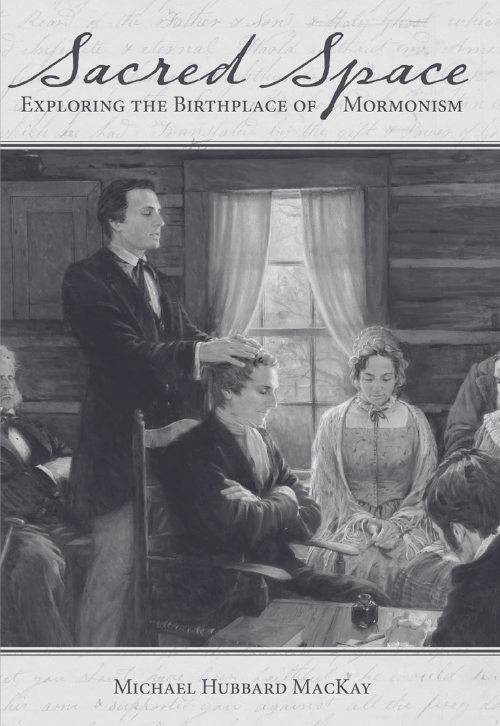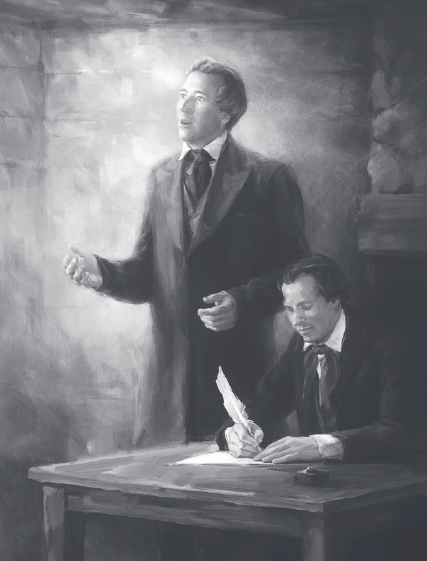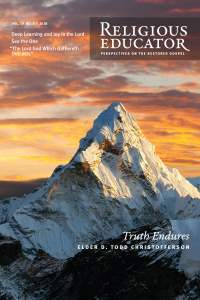Review of "Sacred Space: Exploring the Birthplace of Mormonism"
Daniel H. Olsen
Daniel H. Olsen, "Review of Sacred Space: Exploring the Birthplace of Mormonsim," Religious Educator 19, no. 3 (2018): 153–57.
Daniel H. Olsen (dholsen@byu.edu) was an associate professor in the Department of Geography, Brigham Young University when this was written.
Michael Hubbard MacKay. Sacred Space: Exploring the Birthplace of Mormonism. Provo, UT: Religious Studies Center; Salt Lake City: Deseret Book, 2016. $17.99, 129 pages. Winner of the Harvey B. and Susan Easton Black Outstanding Publication Award for Gospel Scholarship for LDS Audiences, Church History and Doctrine, 2016. This review is reprinted, with permission, from Mormon Historical Studies 17, nos. 1–2 (2016).

When I was asked to read and review Michael MacKay’s Sacred Space: Exploring the Birthplace of Mormonism, I was expecting to read a straightforward history of Fayette, New York, the story of the founding of Mormonism in Fayette, and the efforts of the LDS Church to purchase and restore the Peter Whitmer Sr. home where, Church members have been told, the Church was organized on 6 April 1830. However, I was quite surprised, as I imagine most Church members would be, to read that the location of the establishment of Mormonism is highly contested within some Mormon history circles. Some historians, following the work of Michael Marquardt and Wesley Walters in their book Inventing Mormonism, believe that the church was organized in Manchester, New York, at Hyrum Smith’s log home. Other historians, as well as LDS General Authorities, claim that Fayette is the correct location of the founding of the Church. The purpose of MacKay’s book, then, is to “address historical claims that the Church was not established in Fayette by taking a close look at what the existing documents tell us” (18) by “revisit[ing] and reinterpret[ing] the relevant source material” (17) used in this Manchester-Fayette historical debate in light of new documentation from the ongoing Joseph Smith Papers Project. In other words, MacKay attempts to defend the argument for Fayette being the location of the formal organization of the LDS Church.
In the introductory section of the book, MacKay, in essence, asks the question, “Why does this debate about the location of the founding of the Church matter?” To answer this question, MacKay looks at the importance of sacred places in Latter-day Saint thought and practice. In addition to land for temples, the LDS Church has purchased many historical sites related to the founding of the Church, as has the Community of Christ. These sites play an important role in the Church’s cultural memory and in the development of individual and collective religious identities. Indeed, thousands of members of the LDS Church and the Community of Christ undertake informal pilgrimages to these “theologically significant spaces” (1) to learn more about the establishment of the Mormon movement and to be in the places where the events of the Restoration took place. In the context of this book, the LDS Church, through its Historic Sites Division, has been very particular in terms of historical and archaeological accuracy when it comes to identifying, restoring, maintaining, and interpreting its historical sites. Sacred places that serve as the primal origin of a religion are an important part of a religion’s identity and help to validate faith (12), and as Douglas Davies has observed, “There are many Mormons for whom the primal story of the Restoration does constitute the truth: a basic epistemology that furnishes a template for history and for the stories of family life.”[1] As such, the Manchester-Fayette debate is an important one to consider, for if the official position of the Church is that the Restoration took place in Fayette but the actual meeting took place in Manchester, this fact can potentially “undermine the Church’s claim to truth and disrupt its divinely guided origin” (17).
 Potential editorial errors may have listed all the revelations received around 6 April as having been received in the Manchester region of New York.
Potential editorial errors may have listed all the revelations received around 6 April as having been received in the Manchester region of New York.
In chapter 1, MacKay gives a quick overview of the establishment of the Church, outlining the events leading up to the 6 April 1830 organizational meeting and the ordination of Joseph Smith to be “a seer, a translator, a prophet, an apostle of Jesus Christ, and elder of the church through the will of God the Father, and the grace of your Lord Jesus Christ” (D&C 21:1). While the heading of Doctrine and Covenants section 20 states that this revelation was received “at or near Fayette,” the crux of MacKay’s arguments, as he articulates in later chapters, is that Joseph Smith’s call to be a seer, translator, prophet, apostle, and elder was given on 6 April 1830 at the Whitmer farm in Manchester, and his official ordination on that day, as outlined in other historical documents by Oliver Cowdery, “was a founding event even within itself” (35). MacKay delves into this in more detail in chapter 2, where he reviews the historical documentation related to the Church’s establishment. While the when of the Church’s inauguration is well documented, MacKay notes that “confirming where Smith organized the Church of Christ” is not a simple task (40), in part because there is a lack of legal documentation showing the formal incorporation of the Church and also because there are no minutes of the organizational meeting and no existing contemporary accounts of the meeting in existing journals or letters (41). Even trying to track Joseph Smith’s movements in the days preceding and following the 6 April meeting, as MacKay does in this chapter, still adds ambiguity as to where exactly this meeting was held.
In chapter 3, MacKay reviews three documents attributed to Joseph Smith and Oliver Cowdery in which Fayette is listed as the location of the organizational meeting: a copy of conference minutes that Smith presided over on 3 May 1834, printed in The Evening and Morning Star; two deeds Cowdery signed for Smith in 1834; and drafts of Smith’s history (58). According to MacKay, “These three sources demonstrate firsthand what Joseph Smith and Oliver Cowdery taught and recorded privately about where the Church was established” (59–60). Also, in chapter 4, MacKay looks at Revelation Book 1, where Oliver Cowdery seemed to change the dates and locations of section 21 to indicate they were received at Fayette. So why did official Church materials state that the organizational meeting of the Church was in Manchester? MacKay traces this to potential editorial errors by W. W. Phelps, who may have listed all the revelations received around 6 April as having been received in the Manchester region of New York. This error was then perpetuated into other Church materials.
Michael Marquardt, who recently reviewed MacKay’s book, suggests that this “little book is a propaganda piece based upon emotion rather than history. The author is more interested in his sacred space than in what the historical record brings to the story of the Restoration. . . . Most readers will not be taken in by this short book built upon emotion.”[2] I, apparently, am not “most readers,” as I found this book to be rigorous in its scholarship and, in agreement with Richard Bushman (quoted on the back cover of the book), found MacKay’s findings and arguments to be plausible and persuasive. Also, MacKay writes in a clear and succinct manner that makes it easy for a general reader to navigate the tedium of historiography and document analysis. This “little book” is an important read for Church members who not only want to learn more about the establishment of the Mormon movement but also ground their faith in the Restoration and its attendant sacred places in “rigorous research and [a] careful examination of historical records” (18).
Notes
[1] Douglas J. Davies, The Mormon Culture of Salvation (Aldershot, UK: Ashgate, 2000), 12–13.
[2] H. Michael Marquardt, review of Sacred Space: Exploring the Birthplace of Mormonism, by Michael Hubbard MacKay, https://
